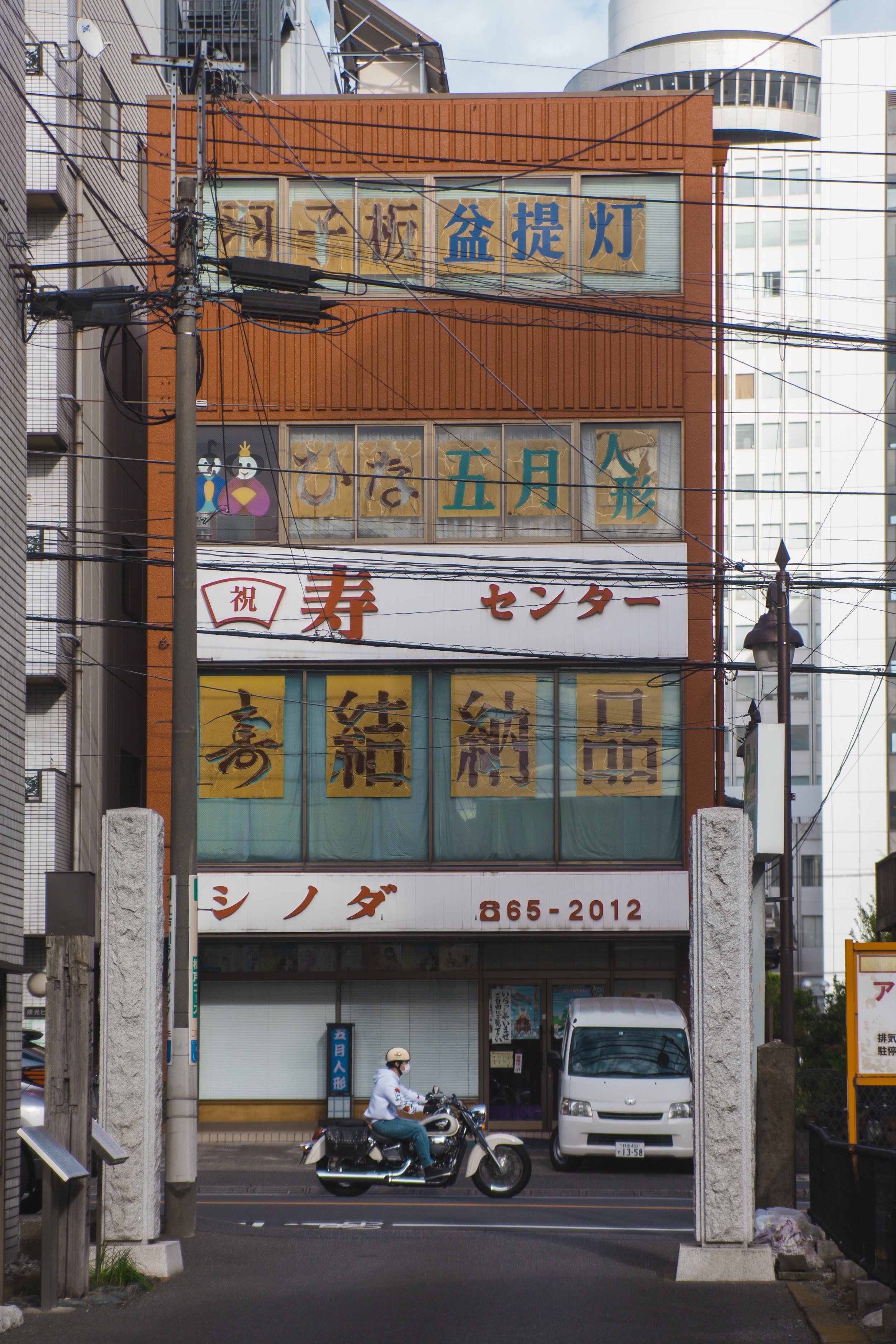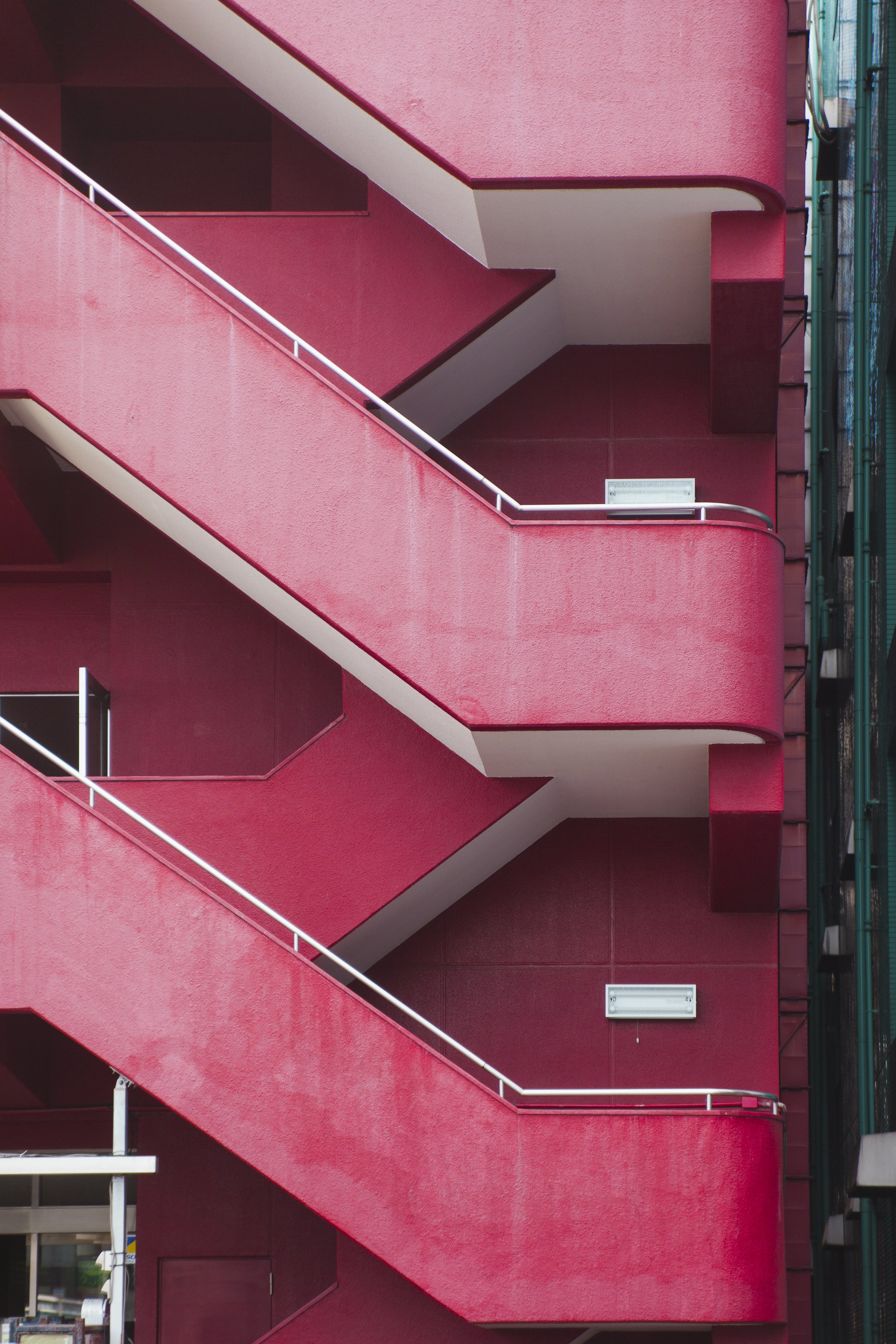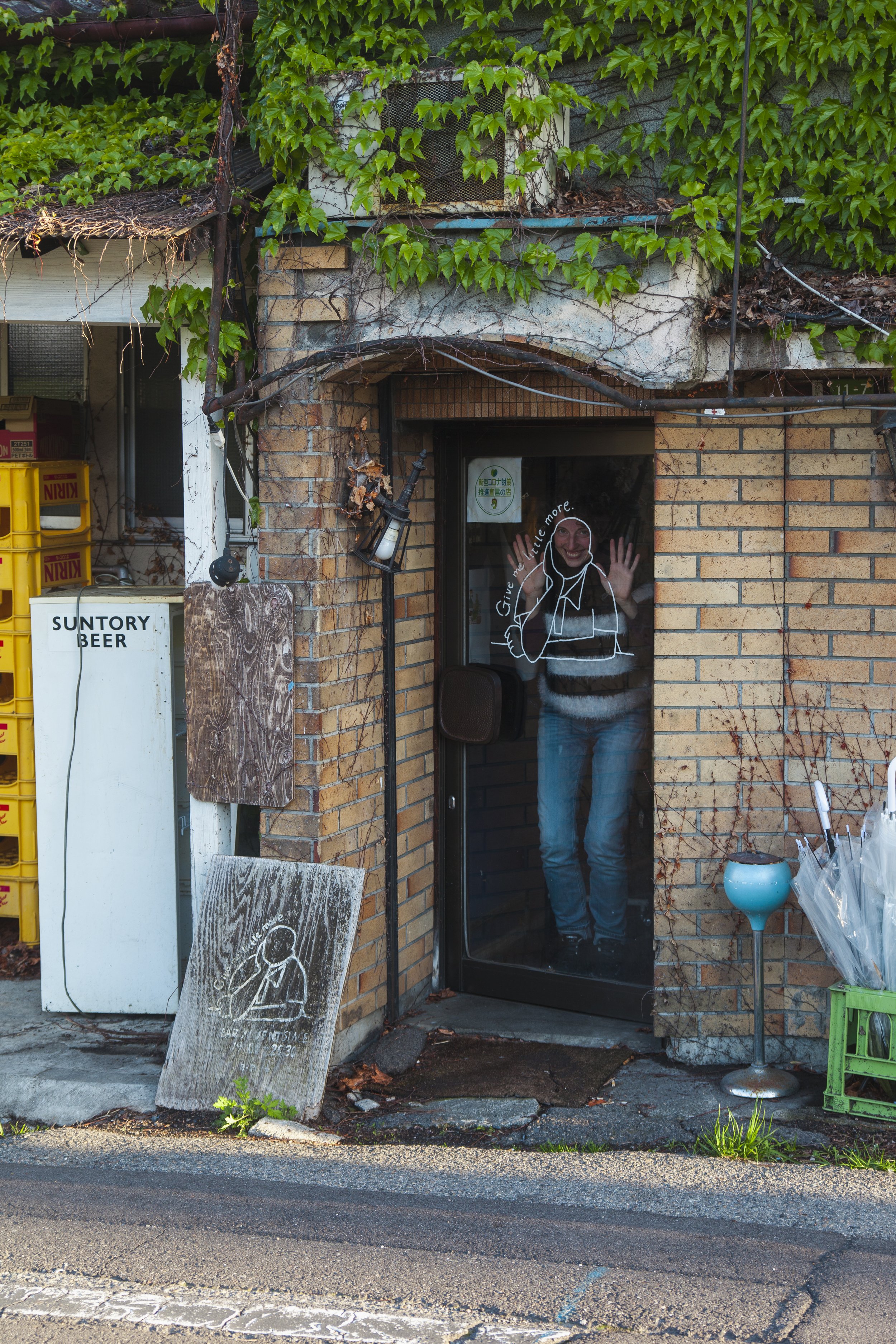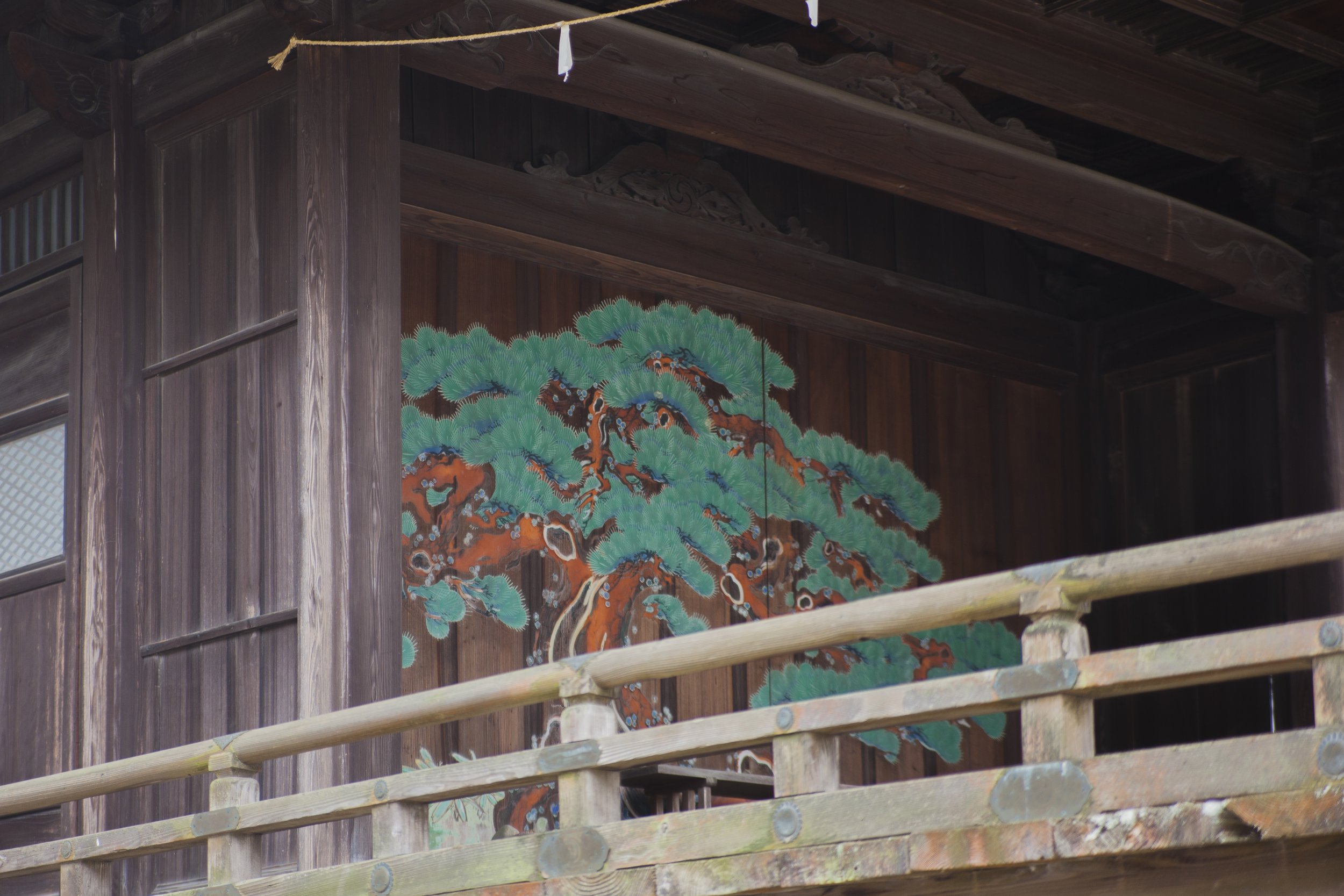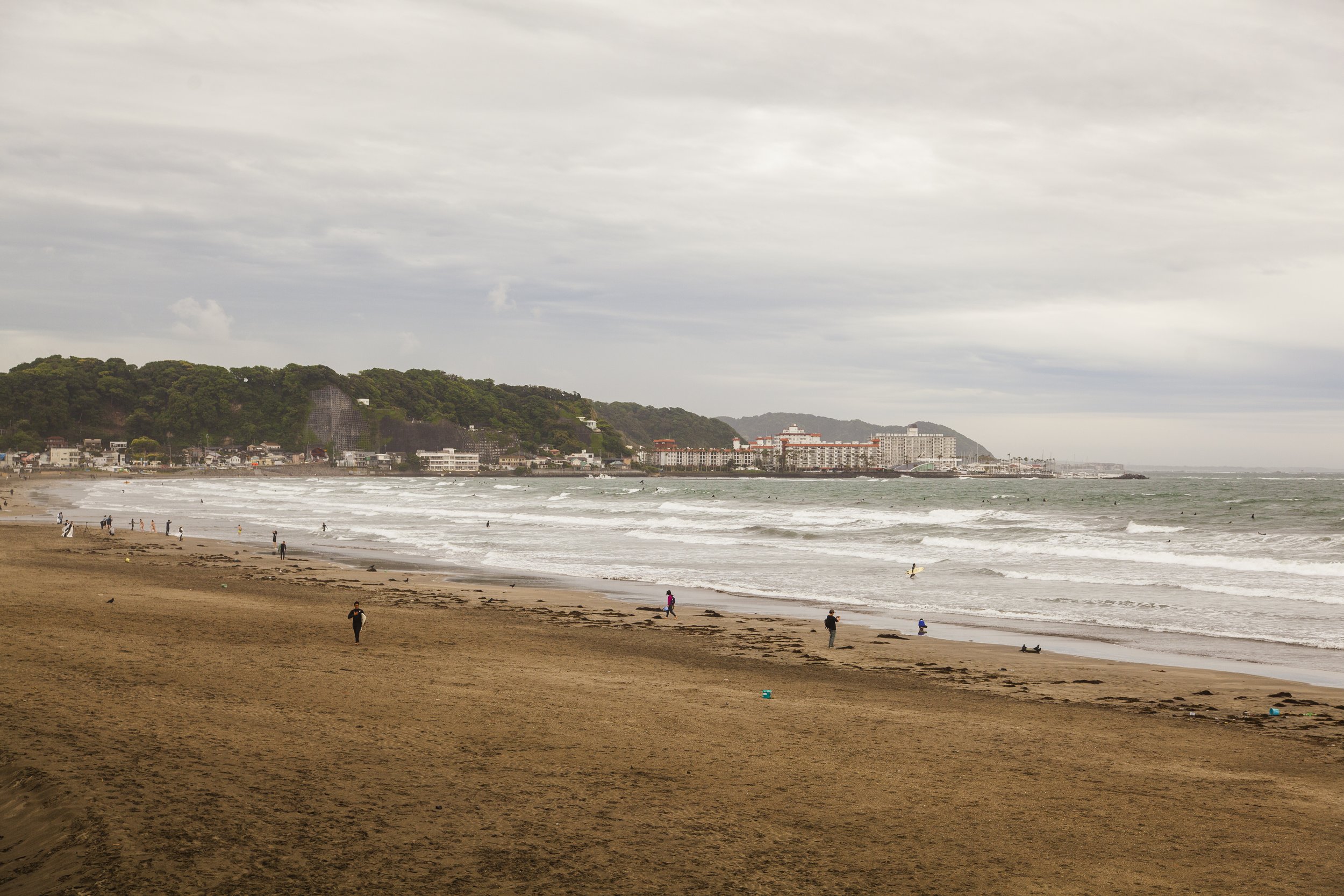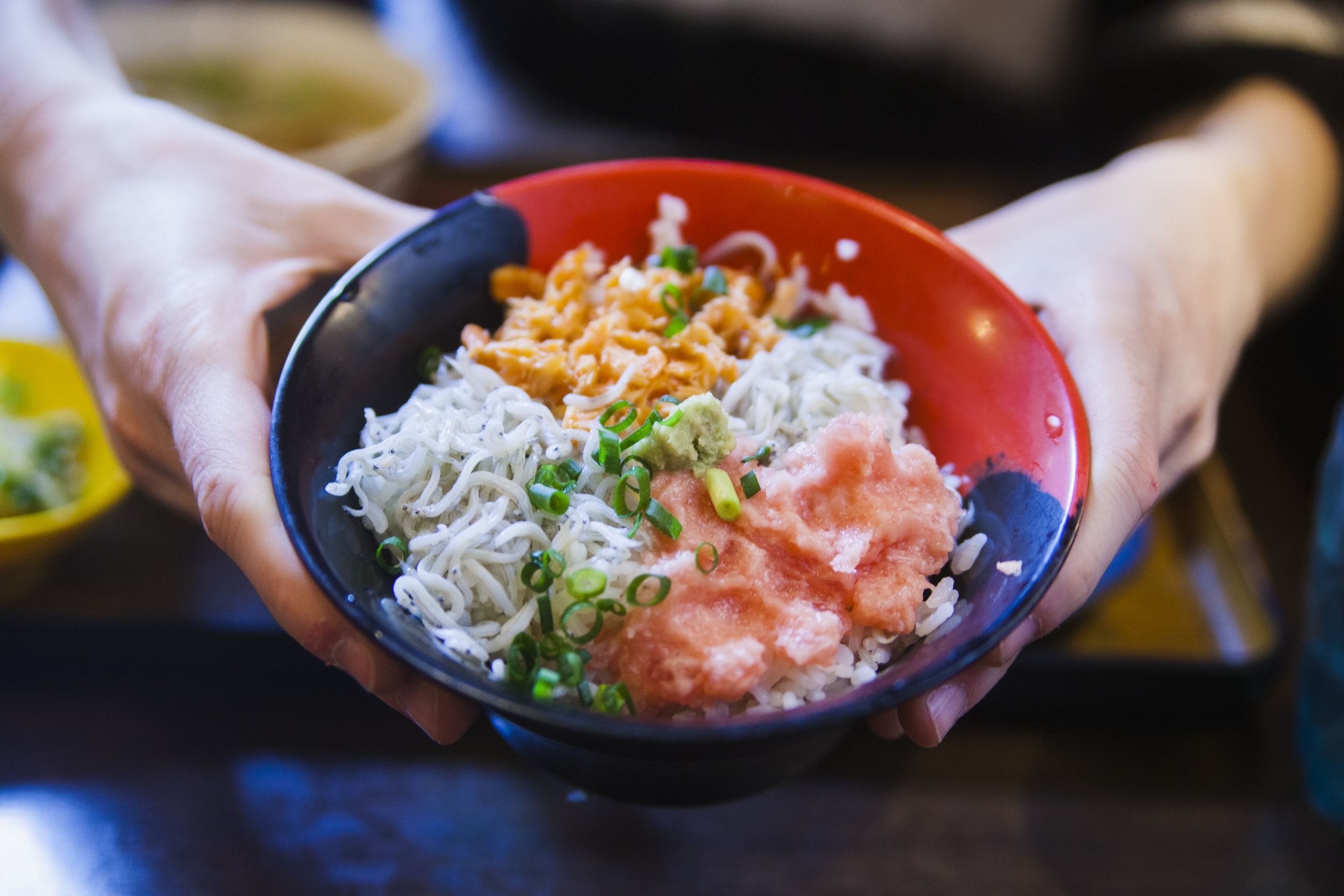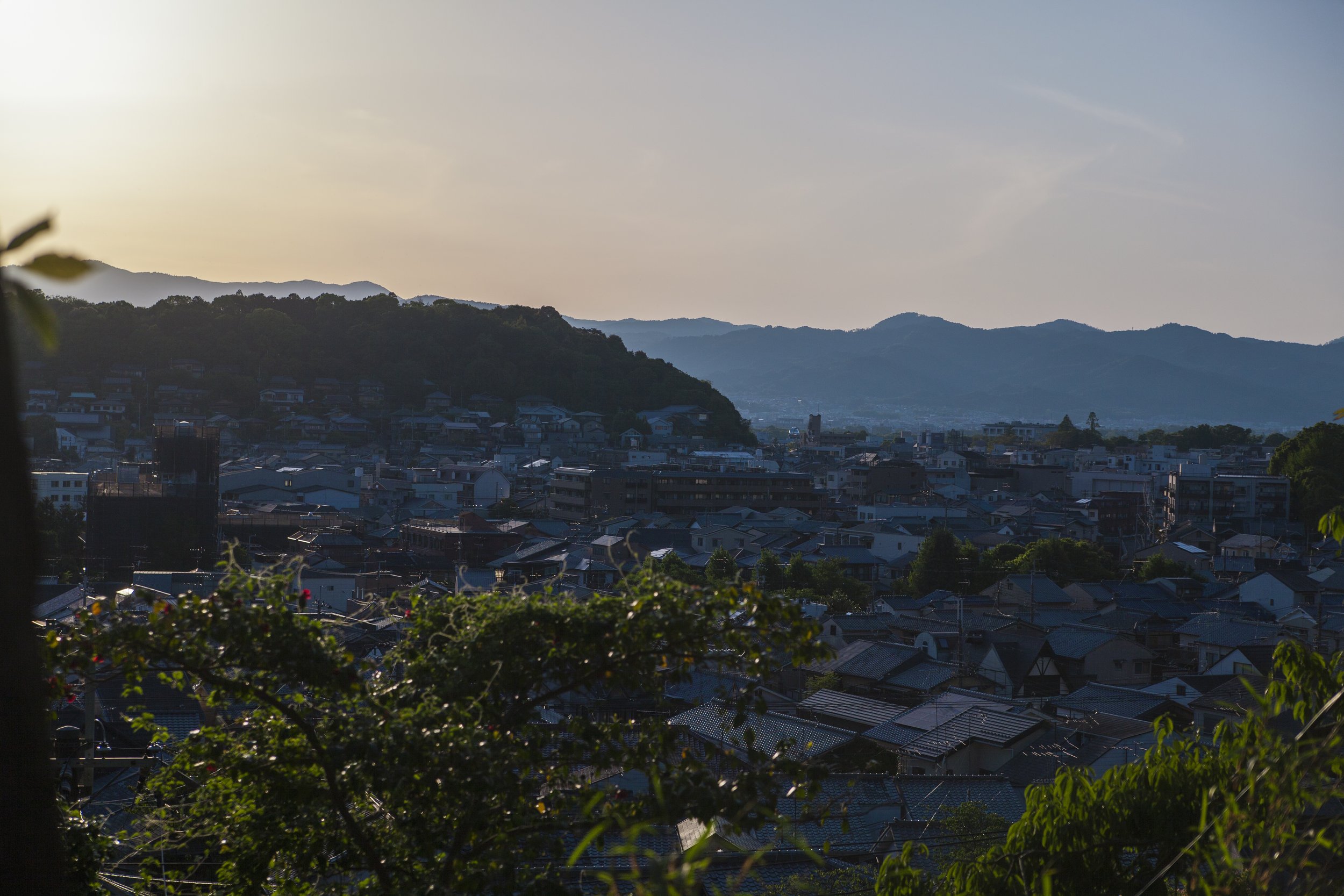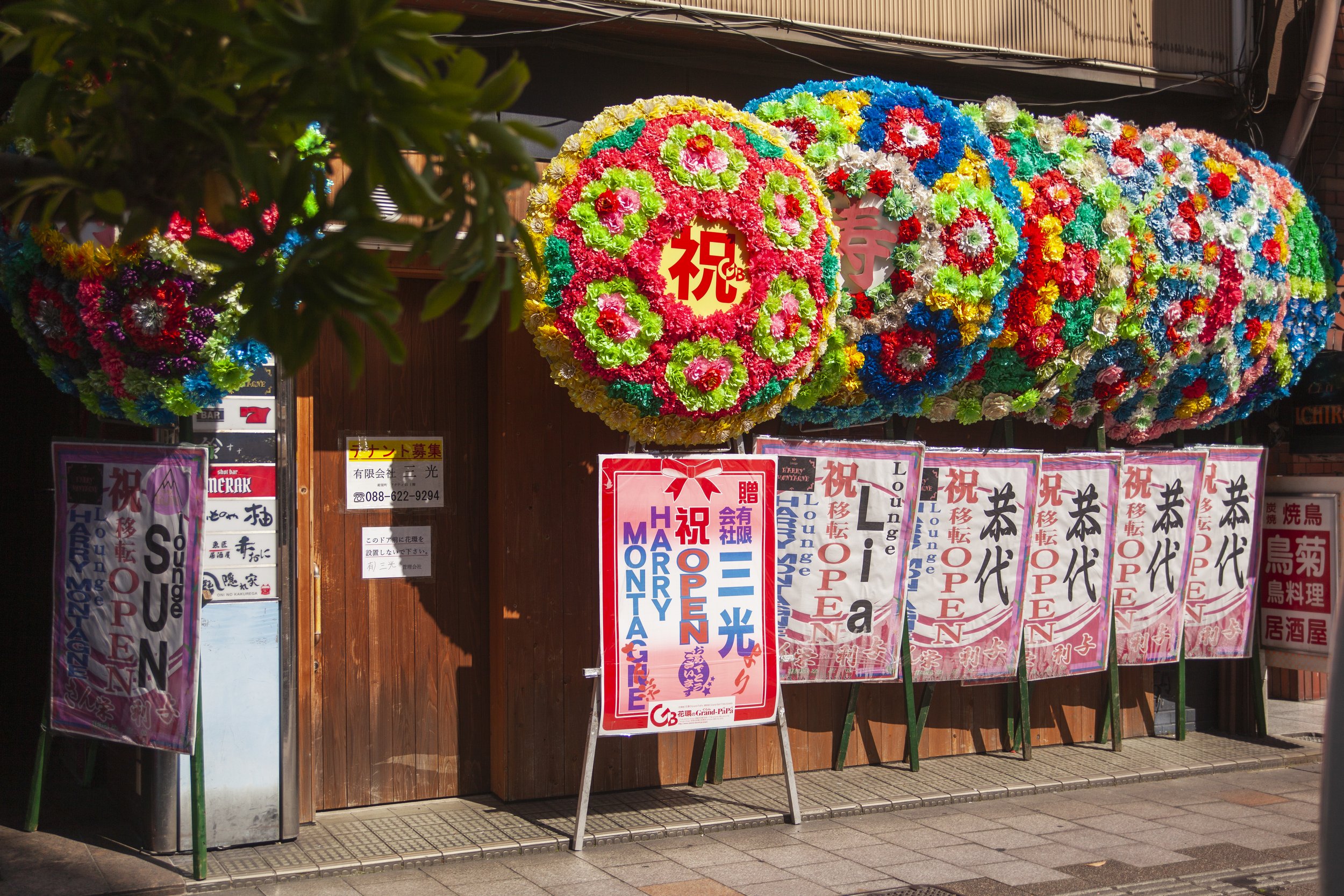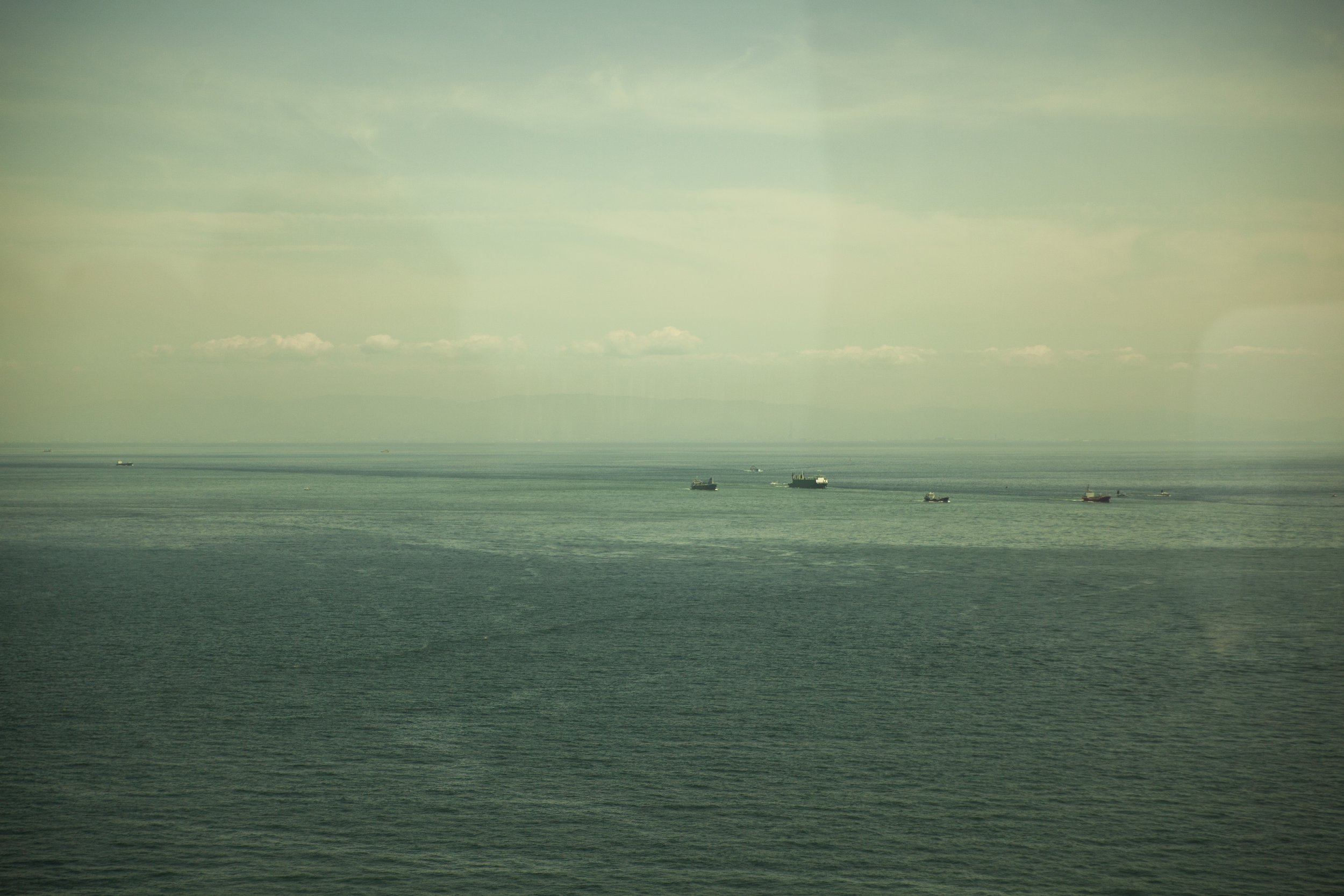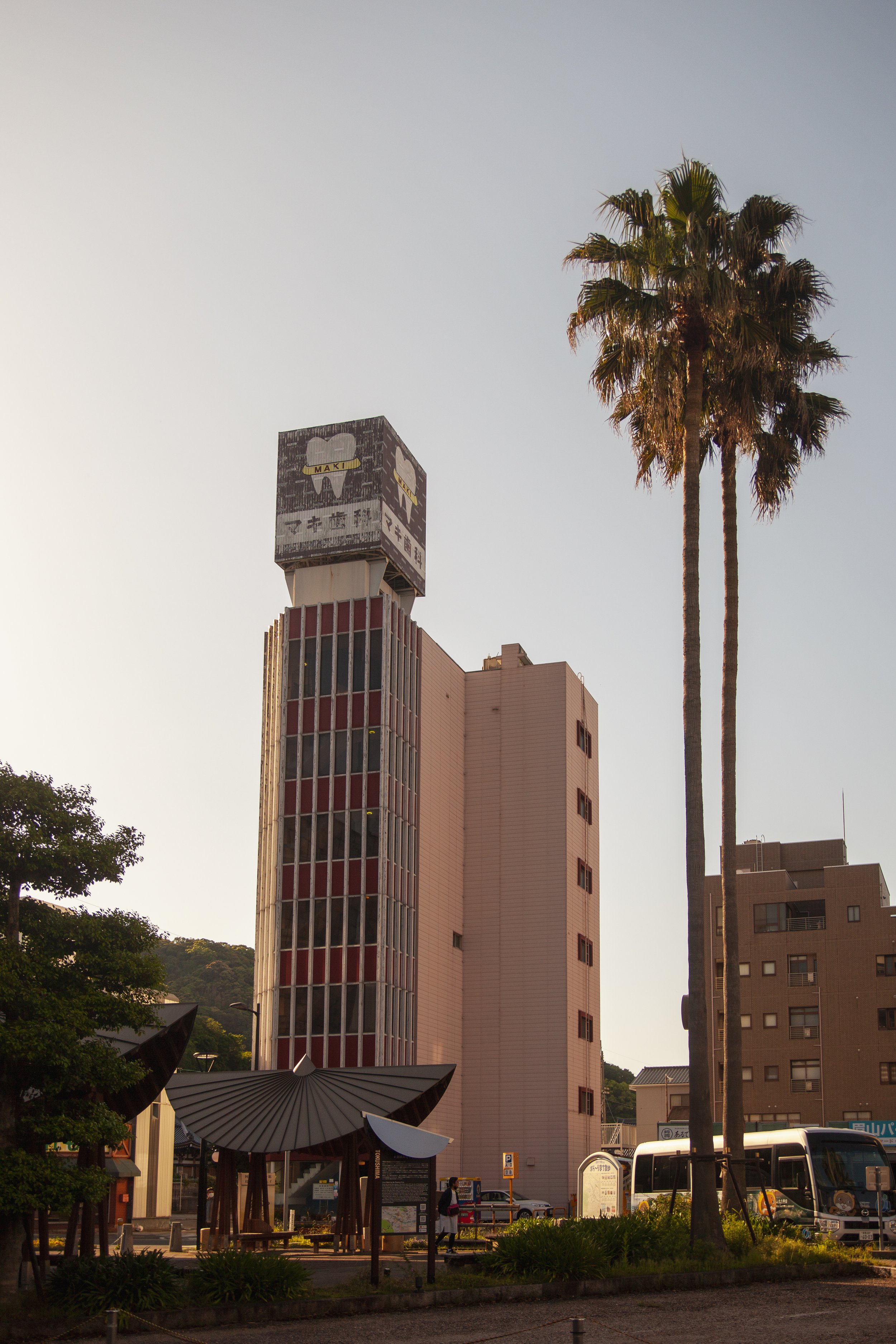A visit to the Hiroshi Yoshimura exhibition in Kamakura!
It was an especially long flight to Japan this time around: Tallinn -> Istanbul -> Seoul -> Tokyo, and with an overnight layover at the airport in Seoul. But finally, after years of extra planning due to the pandemic, we actually managed to travel to Japan for a two projects: a residency at Paradise AiR in the outskirts of Tokyo, and a tour of 17 concerts around the country.
Yes we had been to Japan once before, but somehow between the haste of the experience and the fact that it had been very limited to the rural town of Nakanojo, we didn’t feel like we had seen much of the country.
A typical Matsudo scene
Paradise AIR - an artist residency in disguise as a casino
Paradise AIR is a ten-year-old artist-run initiative in the friendly neighbourhood of Matsudo, just at the border of Tokyo as a city, but not really terribly differently looking from it. The scenery of our daily metro rides was large crowds of commuters, their schedules, like ours, strictly dictated by train timings. After each of our concerts, we had to keep an eye at the clock in order not to miss the last train back: taxis are not affordable and buses stop service, so the only alternatives are walking, or sleeping over at karaoke bars.
Back to Paradise: it took over the premises of what once was a love hotel, at the upper floors of a pachinko building painted with dull pastel colors. The soundtrack of our ascent up the stairs each day was a mosaic created from slot machines and games, each in their own tonal center somehow working together to create a dense cloud of sonic neon fuzz. We were in residence with two other artists, each of us occupying a room equipped with a now less often used jacuzzi, and other remnants of the hotel’s past. We meet the residency’s staff weekly, often sharing meals. We got used to late afternoon visits to the grocery stores, where just after 5pm you could find everything discounted from the fridge - this budget cornucopia of Japanese staples colored our diet during our entire trip, supplemented only by the occasional stop to a Seven Eleven or Family Mart.
Having to prepare for all the shows (and considering that going anywhere in the city it would always take between 45 or 60 minutes on the train), we actually did not manage to sight see too much. But we did make a point of getting to see local music shows, and every single night there was something worth the effort! In Japan, the ticketing system is a peculiar one though, at least as we experienced it: once you buy your (expensive) concert ticket, you are not entitled to enter the venue yet: you’ll have to purchase a drink entrance (usually an additional 600 or 700 yen). This drink token will not secure you with any drink though, but generally will only cover the relative value you paid for, which is mostly sufficient for soft drinks only. The most memorable concert we managed to see featured one of our favorite projects ever: Asa Chang and Junray, for which Meitei opened. Another remarkable experience was to finally see perform live our friend and remote collaborator, Akiko Nakayama.
All in all we played five concerts in Tokyo area during our residency, alongside the open studio of Paradise AIR. We played at Pure’s Sound Market, where shared the set with two modular/electronic artists and a DJ. In the audience, was also Miyu, who builds instruments and works at 5G, and shared his amazing projects as well.
At Knock Koenji: we saw their great vinyl collection, and met for the second time with Sacco, who had a record shop in Shanghai that we had visited some years ago.
Finally we performed two semi-improv sets at Permian and at Otooto.
The absolute highlight of our Japan trip though was an invitation to appear on Haruomi Hosono’s radio show called Daisy Holiday. There’s actually a bit of a story behind it: back in March 2020, we were staying in our Shanghai studio at the Swatch Art Peace Hotel. While most of our friends back in the West were locked down from the pandemic, we felt some odd absence, staying in a very foreign place, with a very strange rhythm of life. One of our obsessions at that time was Kankyo Ongaku, the movement of Japanese Environmental Music which began around the 1980s. We began trying to recreate some of our favorite tracks from scratch using synthesis, a kind of exercise to dive deeper into a kind of music that was inspiring us. One such track was Hosono’s Watering a Flower - he had found this video of ours and so some years after the fact we were in touch about our little Japan tour and found this time to meet. It was a true honor!
It came at a very strange time though, as not too long before two of the original members of YMO, one of Hosono’s most beloved projects, had passed away - it felt that there was a kind of melancholic aura around any conversations revolving around electronic and experimental music in Japan at the present time.
One bit of culture-shock which followed our Japanese experience was the concept of omiyage - it felt like every time we met someone they gave us a gift, and we never had anything to give in return. In fact, on two such occassions Hosono’s manager gave us something and we had nothing to give back except a “thank you” - how embarrassing. We thought, we had to bring something for Hosono, but what could possibly be appropriate. It turned out we had recently reunited with some old artworks of ours called “Sound Envelopes” from our exhibition in Nakanojo, and so we gave one of the “Sound Envelopes” to him - nothing better than being able to gift your own music!
Touring Around
Outside of this, our tour was mainly a straight forward series of stops that connected Tokyo to some destinations further south, reaching all the way to Tokushima.
The first train stop outside of Yokohama is called Totsuka, and there we got to perform at a few month old space built by Kengo Kuma architects. It is also curated by our new collaborators, David and Anna, who joined us in making a great looking multimedia performance including dance and projections (in the photos by photographer Kazuyuki Matsumoto 戸塚 you can get a glimpse of it). The raw material for the projections consisted of our graphic scores for our Circo Pobre music, which had been resting in our computer folders for a long while, so we are very happy that they got given some special love too! Among the audience at the concert was also Satoshi & Makoto who created the excellent CZ-5000 Sounds & Sequences. After the show not only did we get to eat fantastic ramen, but also made a first excursion to Kamakura. This would turn out to be only the first one, as we went back a second time for the incredible retrospective exhibition of Hiroshi Yoshimura.
After our concert in Yokohama, we headed to Yugawara, the hometown of Makoto Inoue, or the ‘Ino’ in Inoyama Land. We had the extremely special experience of sharing a full day recording session with both Makoto and Yasushi creating a Inoyama Land and Passepartout Duo collaboration. The kindergarden of Makato’s family has been his studio for decades, and is a special place where many recordings have been made - it was great to see how this incredible duo works up close, and to share some wonderful moments together in Yugawara.
Classic Matsumoto
Koinobori
From there, we took a bus to Matsumoto where we would stay a couple of days. Our hostel was filled with young tourists who were there for hiking the Japanese Alps. The town is also famous for its castle. Our concert was shared with an improv duo and another synthesizer artist that runs one of the few modular synthesizer shops in the country. One of our favorite spots was the former schools in the park which had many old pianos. Music education was quite a pervasive presence since there Matsuomoto is also the hometown of the original Suzuki method. Even if we missed Sakura season everywhere else in Japan, we did manage to catch a small glimpse of it here where the cool mountain climate kept Spring away a couple weeks longer. One of the fellow musicians on the shared bill in Matsumoto happened to be Sho Sugita, who not only translates poetry from Japanese to English, but also happens to be a modular addict and runs a great online shop for electronics - you can find it here.
After the radio show with Hosono aired, our conversations at every concert were easily hijacked into monologues of middle-aged audience members about their love for YMO, as it happened at the lovely gig in the minuscule town of Fujimi. Unexpectedly, there we also managed to get a glimpse of Mount Fuji, from very far away, the only view of it we have managed to catch so far.
Our next stop was to be a brand new hostel and art venue called Centre Hostel. almost at the northern end of one of the metro lines on Ginza Road. Two artists founded it, Madoka Kouno and Shinkan Tamaki, and they prepare delicious food too. Together with Shinkan we prepared an audiovisual improvisation session as well. In town you can also visit a very very tall Buddha sculpture.
Our path started turning south, Nagoya being our next destination. There we met a new friend, a textile artist who had been in residence at Paradise AiR before, and an older friend, who we know from a residency in Germany. The venue where we played at, called Casablanca, was small and well packed, so that we decided to move a couple of the acts on the roof, including a fantastic set from a daxophone player, with cool rhythms and a lot of looping!
Every single destination has stayed in our mind with a little story about each venue and about at least one great meal. In Kyoto we got the chance to share the bill with the band Kukagendai who is running the venue Soto, in a beautiful part of town next to a magical temple. And always in Kyoto we played at a very different venue, half shop of vintage clothing, where we met for the first time Jerry, who also was the organizer of our Osaka show. We took some time to visit the Imperial Castle but we would have definitely love to spend more time in the city, and maybe visit the zen garden that inspired John Cage too.
Osaka was possibly the most surprising city of them all, as it turns out that the accommodation that we could actually afford to book was located in the district of karaoke bars and red lights. Regardless, we have lovely memories of our gig at MIIT House, where we also played a small improv together with expats Jerry and Andy Couzens, and the incredible dancer Yangjah. As memorable as is also our conversation with Jerry about Noh theatre!
The first time I got in touch with Tobira Records they were still located in Tokyo, so it was quite a surprise to pick up the conversation again and find out that we would have to get to the remote town of Kasai instead, to play this set. There the record shop is holding lively monthly showcase with performers and djs.
By bus we reached Tokushima, location famous for a certain type of traditional dance and music festival that takes place in August. A very unique bar in town is called Txalaparta, and is indeed called after the Basque instrument as the founder was extremely inspired by the story of the txalaparta duo touring the world in a documentary a few years before. Here one of the audience members was a particularly jolly, hailing originally from Hawaii, and working with tourism and translation - it was quite interesting to hear his perspective on what life is like locally.
And it was finally time to meet one of our friends of friends’ contacts, at the university in Osaka, who gave us the fantastic chance to talk at the University in their brand new building. It was very interesting to hear about what sort of topics the PhD students coming from all over the world were researching.

